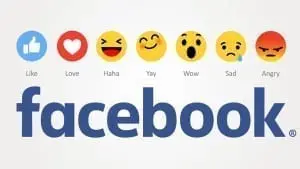
In early February, a number of Facebook users noticed the addition of a “downvote” button added to comments on Facebook public Page posts (such as a business page). Facebook has confirmed that the button has been added to a small subset of users to help them gather information about post engagement in the comment section of Facebook pages.
What is the Downvote Button?
Similar to the discussion-site Reddit, Facebook’s downvote button can be used to show disinterest, dislike, or lack of appreciation for comments by other users. It is limited only to use on comments placed on Facebook public Page posts. The downvote button is not on Facebook profile posts or posts in groups.
Where Are the Tests Happening?
Not all users are able to see or use the downvote button on Facebook. Currently, it is limited to a small subset of US users and is not being tested on an international scale. Not all US-based Facebook users are able to see the button either. The tests are meant to help Facebook determine what content is useful on pages, which is why they have chosen to limit the test group.
Downvote Button Versus Dislike Button
The addition of a limited downvote button is not a sign that a dislike button will be added in the future. Facebook was quick to emphasize this point, as they have always been against the idea of placing a dislike button on posts and content, because of a fear of promoting too much negativity.
Downvoting serves a specific, short-term purpose for Facebook as a company. It is not meant to be a permanent feature, nor is it intended to show a negative response to the users who have their comments downvoted. Instead, the purpose is to help Facebook better understand what users like or don’t like about certain comments. This data is meant to improve the top comments that appear on Facebook page posts or content that better reflects what types of content users find most engaging.
Facebook Page Engagement Tests
Recently, Facebook has been attempting to show more relevant content to users by filtering out posts which don’t drive engagement. This includes many Facebook public Pages, which are now showing up less in the News Feed for users. Downvote button tests are also meant to foster engagement by promoting user comments that are easier to engage with while demoting or hiding those that do not promote engagement.
According to the Daily Beast, comments with enough downvotes can potentially be pushed to the bottom of a comment feed. By allowing users to have some measure of control over the order of comments displayed on page content, more relevant comments will appear at the top.
User engagement is becoming an increasingly important measure on Facebook. Pages, groups, posts, and content with higher engagement tends to have a higher organic reach and better longevity in a News Feed, while those with low engagement reach fewer people and are not easily seen.
As reiterated by Facebook in recent statements, the downvote button test is not meant to be a precursor for a dislike button. With the data gathered from the test, Facebook states that their intention is to make comments at the top of pages more accurate. It’s expected the downvote button will not be permanent and will be removed once the data is collected from the test.
